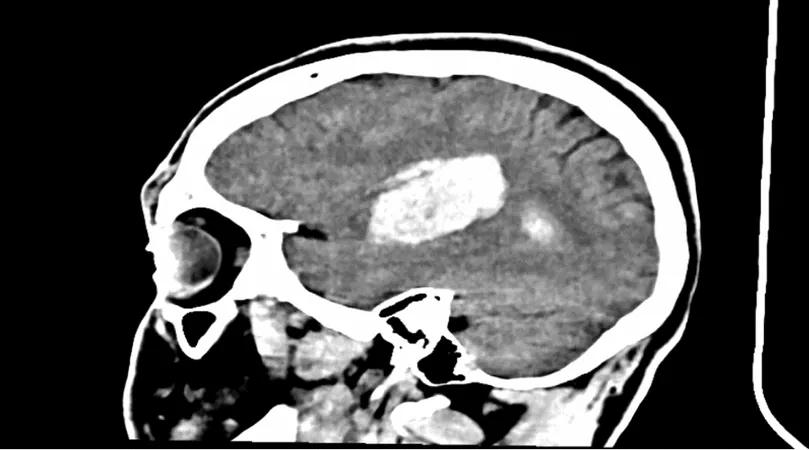
Fever: The Double-Edged Sword of Immune Response – New Study Reveals Shocking Insights!
2024-09-20
Introduction
A groundbreaking study conducted by researchers at Vanderbilt University Medical Center has uncovered the intricate dance between fever and immune function, specifically within a subset of T cells. While fever is generally recognized as a natural response to infection that boosts immune cell activity, this study also highlights a dark side: the potential for fever-induced mitochondrial stress, DNA damage, and even cell death.
Research Overview
Published in the journal Science Immunology, this research is a vital step toward understanding how elevated body temperatures can influence the immune system, and it hints at a possible link between chronic inflammation and cancer development. "Most research on temperature effects focuses on agriculture," explained Dr. Jeff Rathmell, the study's lead author. He emphasized that the effects of temperature fluctuations on immune cells remain largely unchartered territory.
Personal Motivation Behind the Study
Driven by personal experiences, graduate student Darren Heintzman became intrigued by elevated body temperatures after his father faced an autoimmune disease with constant fever. This prompted him to examine how T cells react under fever-like conditions, specifically at 39 degrees Celsius (about 102 degrees Fahrenheit). The results were startling—helper T cells flourished in this warmer environment, ramping up metabolism and increasing inflammatory responses, while the regulatory T cells—those that typically suppress immune reactions—lost some of their effectiveness.
Effects on Th1 Cells
The researchers stumbled upon an unexpected twist: Th1 cells, crucial warriors in the immune response, suffered mitochondrial stress and DNA damage, resulting in cell death for some. "Initially, it was perplexing; these are the very cells needed during infections," said Heintzman. However, the study revealed that only a fraction of Th1 cells perished; the survivors underwent a transformation, adapting their mitochondrial function and becoming more resilient to stress.
Molecular Mechanisms Identified
Diving deeper into the molecular mechanics, Heintzman discovered that this heat exposure impaired a critical component of cellular energy production—electron transport chain complex 1 (ETC1). Such impairment triggered a cascade of reactions leading to DNA damage and activation of the p53 protein, which plays a crucial role in maintaining the integrity of the genome. The study found Th1 cells particularly vulnerable to these changes, signaling a route through which chronic fever could contribute to cellular mutations, a precursor to cancer.
Connection to Inflammatory Conditions
Moreover, the researchers noted similar mtDNA sequences in patients suffering from inflammatory conditions like Crohn's disease and rheumatoid arthritis, reinforcing their hypothesis that these responses are fundamental to cellular stress management.
Broader Implications of Temperature Variability
"Temperature variability in tissues is a common yet poorly understood phenomenon in biology," said Rathmell. "If temperature influences how cells metabolize energy, this can lead to significant consequences, potentially making some cells tumorigenic."
Conclusion
The findings lend credence to the notion that chronic inflammation—often accompanied by prolonged periods of elevated temperatures—could be a gateway to tumorigenesis. With chronic inflammation implicated in up to 25% of cancer cases, understanding this correlation is more crucial than ever. So, is fever a friend or foe? "A mild fever can be beneficial in fighting infections, but excessive heat appears to be detrimental," concluded Rathmell, providing a compelling glimpse into the complex role of body temperature in immune responses and health. This study is set to change how we perceive fevers and their effects on our immune system—one more reason to pay close attention to our body’s signals!




 Brasil (PT)
Brasil (PT)
 Canada (EN)
Canada (EN)
 Chile (ES)
Chile (ES)
 España (ES)
España (ES)
 France (FR)
France (FR)
 Hong Kong (EN)
Hong Kong (EN)
 Italia (IT)
Italia (IT)
 日本 (JA)
日本 (JA)
 Magyarország (HU)
Magyarország (HU)
 Norge (NO)
Norge (NO)
 Polska (PL)
Polska (PL)
 Schweiz (DE)
Schweiz (DE)
 Singapore (EN)
Singapore (EN)
 Sverige (SV)
Sverige (SV)
 Suomi (FI)
Suomi (FI)
 Türkiye (TR)
Türkiye (TR)